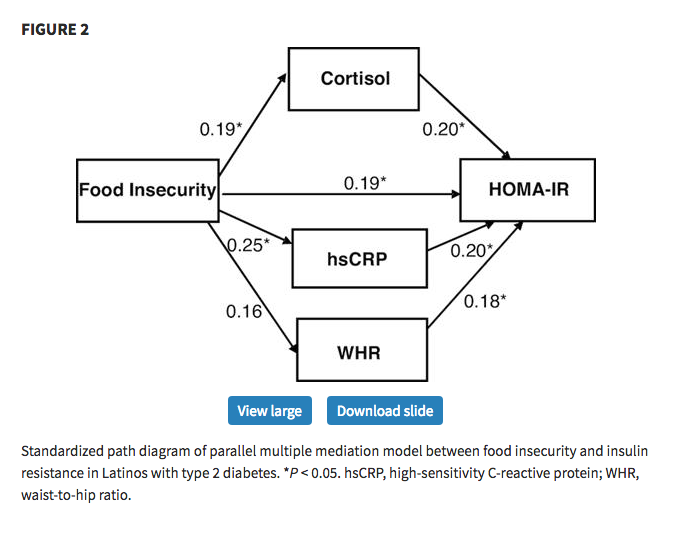
Share On Social!
New data suggests that Latinos who are food insecure are at a more significant risk of type 2 diabetes, according to a collaborative study.
Researchers from UConn School of Medicine, UConn School of Dental Medicine, Yale School of Public Health, Quinnipiac University, Hartford Hospital, and the Hispanic Health Council studied the two factors and their correlation in low-income Latinos.
“Our findings support the plausibility of links between food insecurity and poor health,” Dr. Angela Bermúdez-Millán, assistant professor in the Department of Community Medicine and Health Care at UConn School of Medicine, said in a press release.
About the Study
The study, which was published in the Journal of Nutrition, shows that more than 40 million Americans, including 6.5 million children, live in food-insecure households. This means that these families are without reliable access to a sufficient quantity of affordable, nutritious food.

The study examined 121 Latinos with type 2 diabetes in which 68% of the participants were labeled as food insecure, and 85% were primarily Puerto Rican.
Scientists looked at the association between household food insecurity and insulin resistance using baseline data from the Community Health Workers Assisting Latinos Manage Stress and Diabetes (CALMS-D) randomized controlled trial.
Researchers measured fasting blood glucose, insulin levels, stress hormones, and markers of inflammation.
Researchers discovered that food insecure individuals had considerably higher insulin resistance, insulin, glucose, stress hormones, inflammation, and total cholesterol as compared to food-secure individuals.
Furthermore, food insecurity is associated with insulin resistance due to inflammation and stress hormones.
Latinos & Food Insecurity
It is well documented that Latinos are plagued by food insecurity.
Additionally, many U.S. Latino communities contain food swamps and are food insecurity.
According to Feeding America:
- 81% of Latino households with children who use the Feeding America network of food banks have at least one family member working
- Latinos are less likely to receive help from federal nutrition programs like SNAP (formerly Food Stamps) — compounding the threat of hunger
- Latinos are at higher risk of developing diet-related illnesses — making healthy food options even more important
“Food insecurity is prevalent, widespread, and detrimental to health,” says Bermúdez-Millán.
“Health care facilities can also help address the issue by screening for food insecurity and connecting patients to available resources and interventions.”
What Can You Do?
Want to promote health equity, reduce food insecurity, and eliminate chronic diseases such as type 2 diabetes? Start a School Food Pantry!
About 1 in 6 children are food insecure — they don’t know where their next meal is coming.
Your school can help these kids!
The new Salud America! “School Food Pantry Action Pack” is a free guide to help school personnel talk to decision-makers, work through logistics, and start a School Food Pantry to help hungry students and reduce local food insecurity.
A School Food Pantry accepts, stores, and redistributes donated and leftover food to students.
Bermúdez-Millán is also calling for policy change, using SNAP for diabetes control, and increasing access to healthy foods via community gardens.
Explore More:
Healthy Families & SchoolsBy The Numbers
142
Percent
Expected rise in Latino cancer cases in coming years



